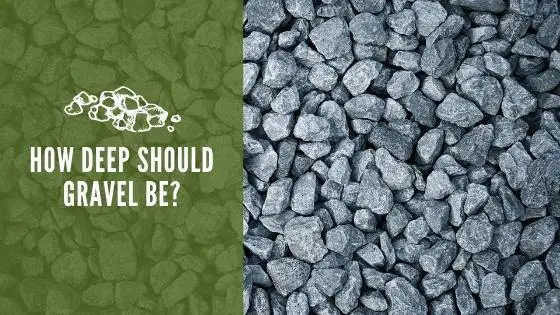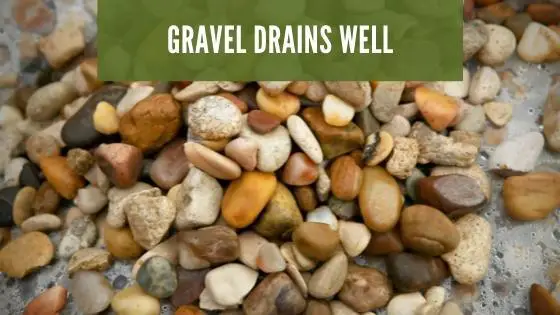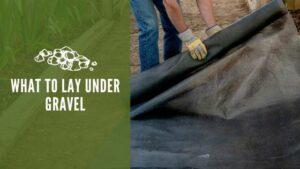How Deep Should Gravel Be?

Gravel can come in handy when you want to create a driveway, patio, or seating area or use it as a pathway in a garden, among other uses.
Besides being versatile, it can also reduce weeds from growing and accent a garden or other elements of a landscape. Before you begin laying the gravel, though, you must know how much to lay or risk unexpected issues in the future.
What Classifies as Gravel
Gravel is eroded rock. It comes in various sizes and colors. Some are a natural rock color, while others are unnatural colors like pink, purple, and blue. The artificial colored rock is man-made. In general, the rock in gravel is usually limestone, basalt, or sandstone.
Benefits of Gravel
In terms of price, gravel is one of the cheaper options for a driveway. It’s also cost-effective if you’re using it as patio material or as part of your landscaping.
When used for driveway material, gravel drains well since it allows air and water to pass through easily and into the soil. When it’s laid on a slope, it’ll easily drain, as long as you lay it with drainage in mind.

You could use it to accent your garden, create a path, or use it around your fire pit, just to name a few examples.
Fortunately, gravel doesn’t break down as mulch does. For this reason, the rocks won’t attract pests, especially since the stone provides no nutrition for bugs. Pest will typically only use gravel as shelter and leave when searching for food. With mulch, various bugs will stick around.
Not to mention, gravel has the potential to prevent weeds from popping up, at least partially.
Gravel Depth
Choosing gravel depth requires you to consider how large the rocks are. It also depends on the particular project you need it for since the rock could be dumped at a site where it’s walked on frequently or driven on.
How Deep Should Gravel Be to Prevent Weeds?
You need to cover the space with gravel completely, so no areas are exposed, which reduces how many seeds that produce weeds come in contact with the ground underneath. It’s important to consider that you could promote weed growth if you put too much because you’ll have puddling.
As a general rule, you should lay about three to five inches of gravel to prevent weed growth. Remember that you won’t prevent all weeds, so you’ll still need to weed the area or use a preventative measure, such as weed a killer. Make sure to compare your options carefully.
How Deep Should a Gravel Driveway Be?
Your driveway deals with the continuous wear and tear of people driving on it. For this reason, you want to make your driveway deeper than you would if you were merely laying gravel to detract pests and reduce weed growth. Typically, your first layer should consist of the most sizeable gravel rocks. This layer should be about four inches thick.
Every layer after that needs to also be around four inches. However, each subsequent layer after the first should get smaller in terms of the size of the rocks. The reason for this is that you want to build a strong foundation, especially since your driveway will be supporting the weight of one or more vehicles and will have automobiles repeatedly driving up and down it. Generally, you should lay three layers of gravel for the optimal level of support.
What Is the Best Depth for a Patio?
The answer to what the gravel patio depth should be varies based on the type of gravel you have. Let’s say you have pea gravel, which is a small stone. You’ll need about two-and-a-half inches of gravel if you’re using the ground as your base. There’s a reason two-and-a-half inches is the ideal number.
If you have a depth that’s greater than three inches, you, your family, and guests will struggle to walk in it. On the other hand, if the depth is less than two inches, it’ll thin or tamp down over time from people walking on it. As a result, you’ll have exposed areas.
Conversely, if you tamp down stone for your base, you need to have gravel between four and four-and-a-half inches.
As you can see, how much gravel you need varies based on your project. Some projects require one thin layer of gravel, while others that hold greater loads require multiple layers of gravel.
It’s important to understand how much gravel you need before beginning the project, or else you could risk wasting money on the gravel that’s not laid right.


